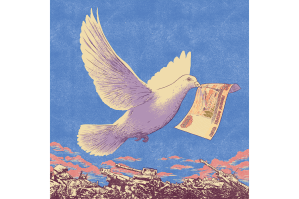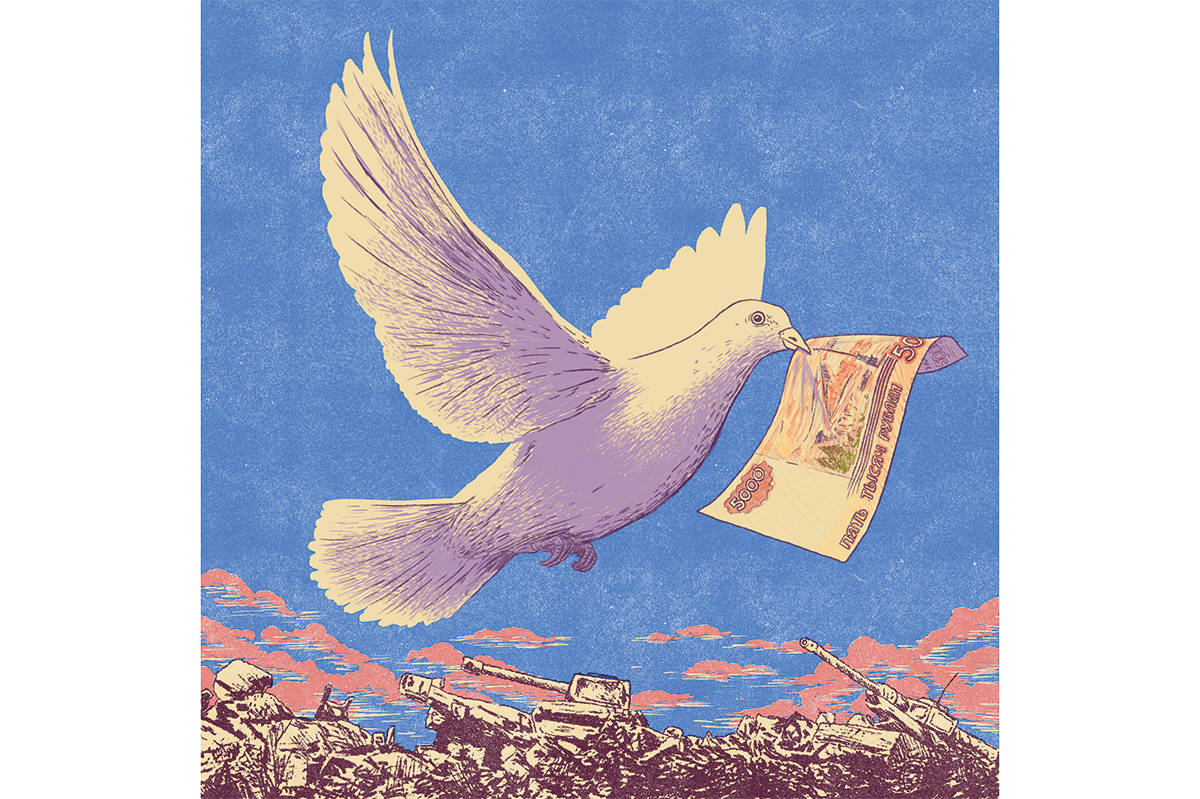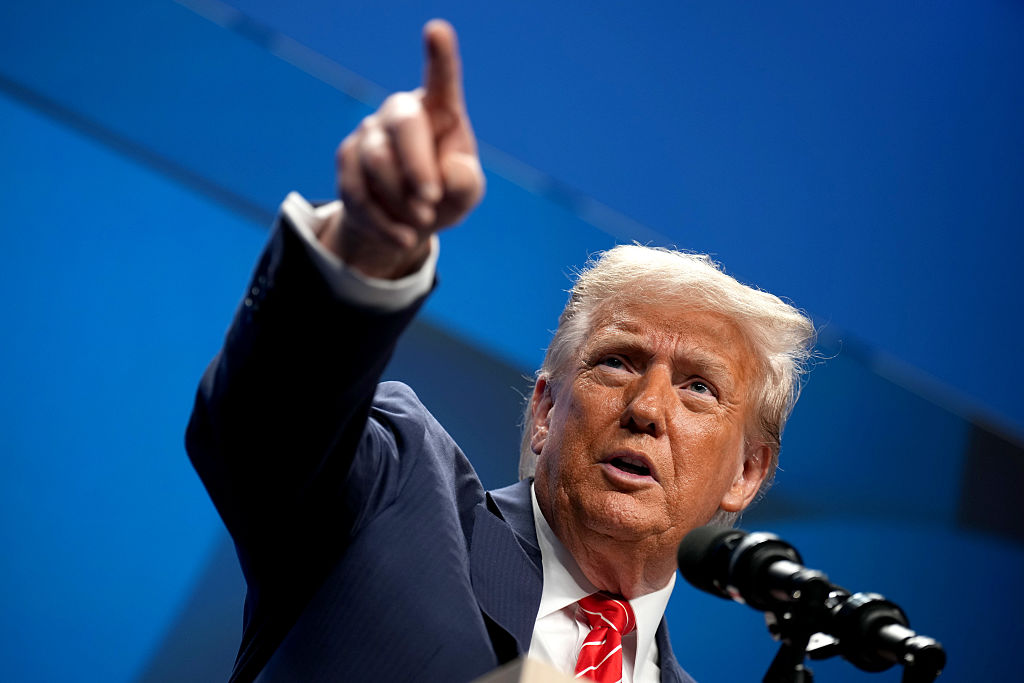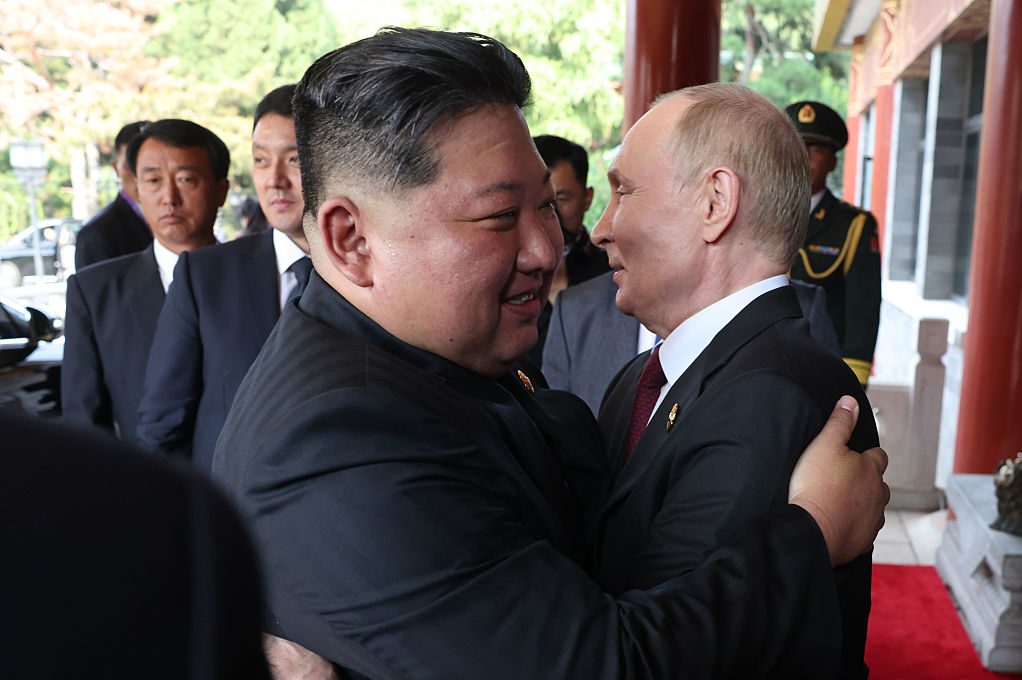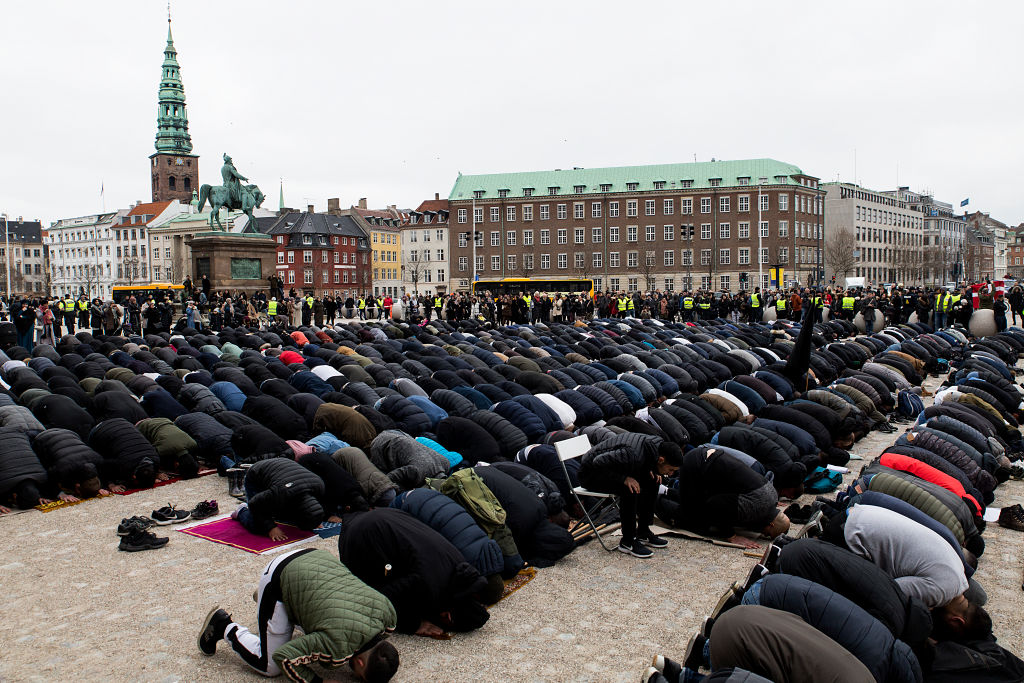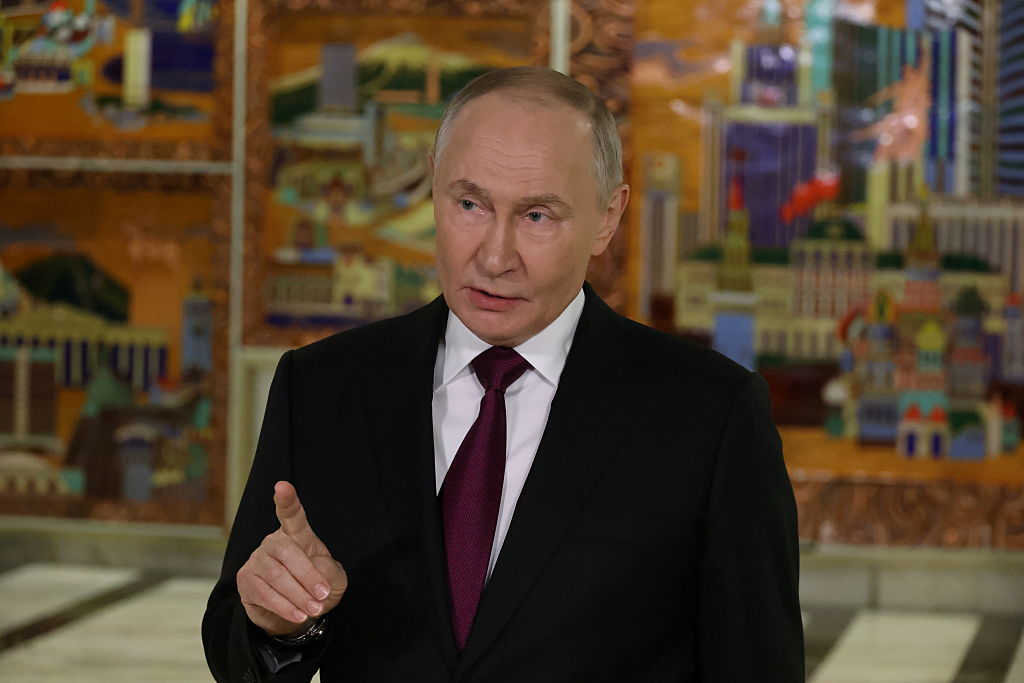Nikole Hannah-Jones, who is never at a loss for a tweet, ridiculed Americans who are expressing alarm over the threat to Europe implicit in Putin’s invasion of Ukraine. She put down those spoilsports for their referring to Europe as a “continent.” Quoth Hannah-Jones, under her nom-de-plume Ida Bae Wells:
What if I told you Europe is not a continent by definition, but a geopolitical fiction to separate it from Asia and so the alarm about a European, or civilized, or First World nation being invaded is a dog whistle to tell us we should care because they are like us.
The triumphant silliness of the author of the 1619 Project always comes down to her desire to find racism at the root of whatever happens. Her follow-up tweets extend her theme that we care about Ukrainians because “the people appear white, or they are ‘civilized.’” Presumably if Putin had invaded the Republic of South Sudan and was attacking the Nuer and Dinka peoples, we would not have comparable concerns about the fate of central African civilization.
Hannah-Jones has a special talent for racializing everything in reach. She has been roundly mocked on Twitter for her geography lesson, but let’s for fun treat it seriously. Is Europe a continent? Does it matter?
It has actually been known for some time — perhaps 3,000 years — that Asia and Europe form a single land mass. Recently archaeologists excavated a 2,600-year-old tomb on northern China that contained an Assyrian leather-armor coat. It got there not by boat but via long-distance trade over what we now call the Silk Road. So, yes Nikole, Europe and Asia are physically connected. What exactly this means, however, is open for debate.
Ever since Pluto was demoted from “planet” to a “trans-Neptunian object” and then to a “dwarf planet,” experts — more accurately known as “experts” — have been busy in their efforts to force false precision onto old ways of describing the world. Actually, the impulse is even older than busting Pluto’s rank as the ninth planet. The de-planeting astronomers are a branch of the same tribe of precisionists who bridle if you refer to a beetle as a bug. (Bugs are in the order Hemiptera, don’t you know, while beetles are Coleoptera.) And let’s not get started on the poor Brontosaurus, who started out as a genus in 1879, was demoted to just-another-Apatosaurus in 1903, spent a century or so living on as term that those- who-don’t-know-better kept using, and then stuck its long neck out again in 2015 in a determined effort to regain some standing in minor leagues of the Sauropoda.
The great classification game is important in science. Dwarf planet, Hemptera, Apatosaurus: it all matters to the experts. Classification promotes close observation which leads to meaningful discoveries. But classification can get in the way of perfectly lucid distinctions in common use, such as referring to Europe as a continent.
If you ask a geologist what a “continent” is, he will tell you it is a large tract of land above sea level. The continents sit on top of, but are not identical to, deeper structures in the Earth’s crust called plates. Europe and Asia reside on a single plate, aptly called the Eurasian Plate. Score a point for Hannah-Jones.
But if Europe and Asia share a plate, they have quite different table settings, silverware and local histories. This goes way back. Ancestors of today’s Asian peoples inherited some genes from the still-mysterious Denisovans at least 50,000 years ago. Europeans didn’t. Gene flow in human populations is complicated, but contemporary Asians and Europeans clearly have had disparate population histories. Moreover, the rise of civilization in Asia in the last 10,000 years was independent of what happened in Egypt and Mesopotamia, whose achievements fed what would eventually become European civilization, though at the time Europe was just beginning to discover the joys of agriculture.
Europe — or at least Europe as we know it — was very much a latecomer to the party we call civilization. The “Indo-Europeans” arrived in Europe and displaced (i.e. mostly killed) the people already there about 5,000 years ago. Europeans today (with a few small exceptions) speak languages derived from those invaders and trace most of their ancestry to this group of interlopers.
This deep background matters because it underlies the idea that Europe is distinct thing, a “continent” in ordinary parlance, even if it isn’t geologically so. Europe rather is a cultural continent. It clusters in a single region people who are intensely aware of their differences and who have incessantly warred against each other over the millennia but who share a complex consciousness and deeply embedded and distinctive ideas about the family, person, individuality, society, religion and nature.
Describing these commonalities is far from easy, partly because the differences loom large. But partly also because the commonalities are hidden away in the assumptions and premises of social life, rather than painted on the surface. Those commonalities come to light, however, when Western civilization collides with one of its opposites.
When Westerners first gained some understanding of India, China, Africa, Native America, Polynesia and aboriginal Australia they encountered customs and beliefs they found incomprehensible and often abhorrent. On closer familiarity, non-European peoples became objects of fascination to European observers, and eventually causes of self-reflection. Some anthropologists who studied traditional India, for example, concluded that the entire Indian caste system should be understood as built on “dividuals” rather than “individuals.”
That strange truncation of the word “individual” is meant to emphasize the dividedness of personal identity in the caste system, where personal identity (or so it is claimed) is purely situational. Who I am, in this view, depends on the fine gradations of my status with other people, higher or lower than me in the rankings of ritual purity. This, we are told, contrasts with the West, where we assume that at his core, an individual is a fundamental unity. I may show respect to my boss or my social superiors, but underneath, I am still the same person, negotiating situations rather than redefining myself.
Anthropologists have heatedly debated whether this particular contrast between India and the West is valid. I mention it only as a good example of the effort to grapple with civilizational-level differences. It arises because both Indians and Westerners can sense a profound difference between European and Indian civilization. And both sides can easily describe ways it plays out, as in the contrast between family structures or beliefs about God. But something more also seems present. The difficulty is nailing down which differences really matter. Our common humanity is malleable and some differences of costume, cuisine and custom can be filed as incidental. But how incidental? It can turn out that the way dinner is served in an Ashanti village maps a whole social structure, or the preparation of a meal in Java may embody a whole cosmology. One lesson of anthropology is that even humble customs may hold clues to profound differences.
I’ve perhaps strayed too far down the path of explaining “continental” differences. My point is only that serious people have for a long time sought ways to explain the great cultural discontinuities that characterize the world’s disparate regions. India and Europe are for sure part of the same great landmass and the inhabitants of each were known to the other since ancient times. Yet the differences persisted.
This is to say that the “continent” of Europe is a lot more than what Hannah-Jones considers a racist “dog whistle,” and civilization is a more demanding concept than the kind of tribal identity group Hannah-Jones glimpses peeking out from the pro-Ukraine editorials. The “continent” of Europe is the cultural homeland for Christianity, capitalism, empirical science, limited government, the Enlightenment, human rights and the concept of personal liberties. Those are concepts (and institutions) that first flowered on European soil and then spread, with varying degrees of success, across the world.
Explaining why they first developed in Europe and not elsewhere is an arduous task for historians and anthropologists. Some offer relatively simple answers (Guns, Germs and Steel, says Jared Diamond; Rationality says Steven Pinker; the integration of outsiders says Mark Moffett in The Human Swarm) while others scour the remote past for clues (The Destiny of a King, Georges Dumézil; The Marriage of Cadmus and Harmony, Roberto Calasso; The Golden Bough, Sir James George Frazer). It is a scholarly debate that will not end anytime soon.
But none of those who take the matter seriously argue that the key to Western civilization’s emergence and success is “white people.” That’s Hannah-Jones’s reduction of Western civilization to the size of a weed she can stomp on.
Western civilization, to be sure, is not in such good shape these days. Only recently, we could look to its Anglophone progeny, including Australia, Canada and the United States as robust survivors of an increasingly demoralized Europe. But all three were swept up in Covid hysteria; are currently governed by regimes of questionable legitimacy; and are suffering a cultural and educational descent. Hannah-Jones, of course, is a key figure in that descent, as I elaborate in my book 1620: A Critical Response to the 1619 Project.
But is Hannah-Jones right that it is (merely) “a geopolitical fiction to separate [Europe] from Asia?” While I think the concept of continental Europe is valid and important and not racist, I’m perfectly at ease with the idea that the concept can be buttressed by “fictions.” We usually call such fictions myth, and sometimes literature. The term “Europe” itself refers to the mythological rape of the Phoenician princess Europa who was carried off to the West by Zeus in the form of a bull. The root word refers to the West or the setting sun. Of course, the West existed before the Greeks invented the Phoenician princess, but the myth is a good marker of a conceptual boundary.
The boundary on our minds right now is whether the West can be separate from Russia. Is Russia part of the West? Russians have been worrying and arguing over that for centuries. Most of us would want to annex Pushkin, Tolstoy, Dostoevsky and a good many others to Western civilization, but Russia has always been an ambiguous borderland between West and East. It admires and envies Western civilization, but it also contains the barbarian spirit of Vladimir Putin, who stands in an unhallowed tradition that extends back to the Scythians, Timur, the Khazars the Tatars, the Cossacks, and forward to figures such as Lenin and Stalin, who spread mass murder, savagery, tyranny, destruction and oppression wherever they could.
Putin’s attempt to roll over Ukraine is in this character. He apparently thinks the West is too weak in spirit to stop him, and he indeed has some reason to think that. But the shiver he is sending down Europa’s spine might change things. Hannah-Jones is wrong: the shiver is not a display of racial solidarity among white people. It is the sudden recognition in a waning and complacent civilization that it has real enemies, and that its long preoccupation with phantoms such as climate change have left it vulnerable to the ruthlessness of a determined foe.











